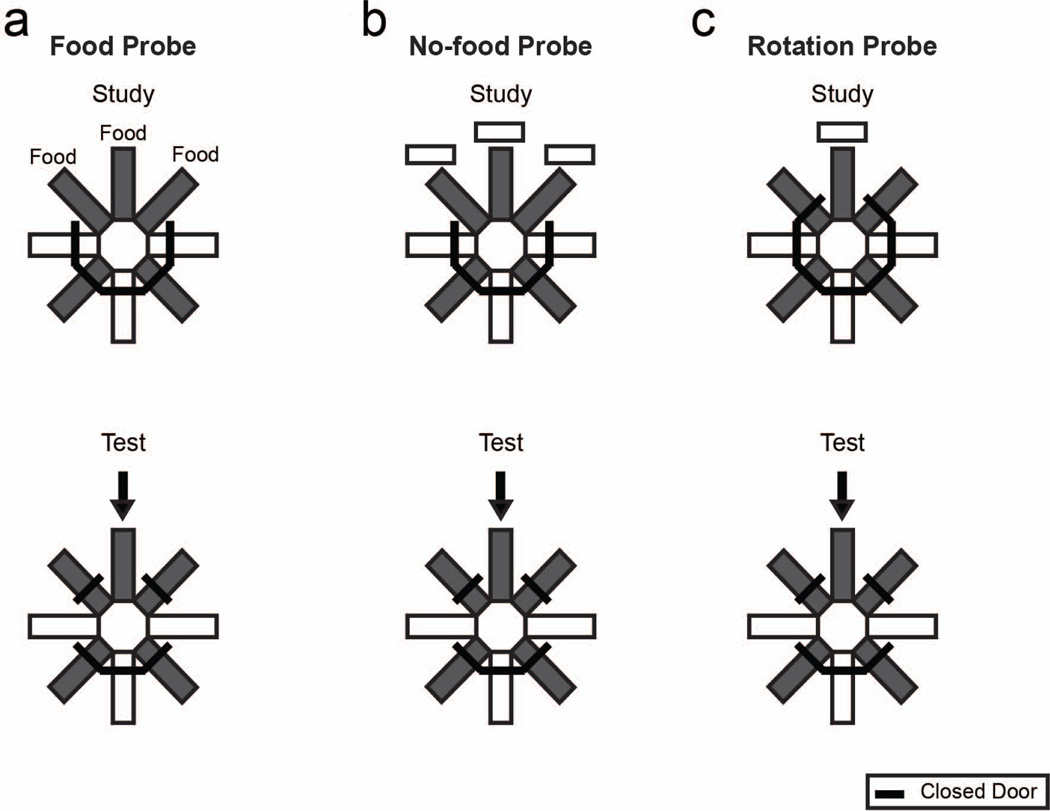Figure 4.
Schematic representation of experimental design of probes from Zhou, Hohmann and Crystal’s (2012) study. a. Food and b no-food probes started with a study phase in the five-arm-radial-maze using arms situated 135°, 180° and 225° opposite to the sample arm. In the food probe, rats encountered one pellet at each of the three arms. In the no-food probe, rats visited these three arms but did not receive food pellets. Next, two choice arms from the T-maze were opened. c. The rotation probe was identical to T-maze training (Figure 3B), except the sample was presented in the arm 180° opposite to that used in T-maze training. a–c. All arms of the actual maze were white. Reproduced with permission from Zhou, W., Hohmann, A. G., & Crystal, J. D. (2012). Rats answer an unexpected question after incidental encoding. Current Biology, 22, 1149–1153. © 2012 Elsevier Ltd.

